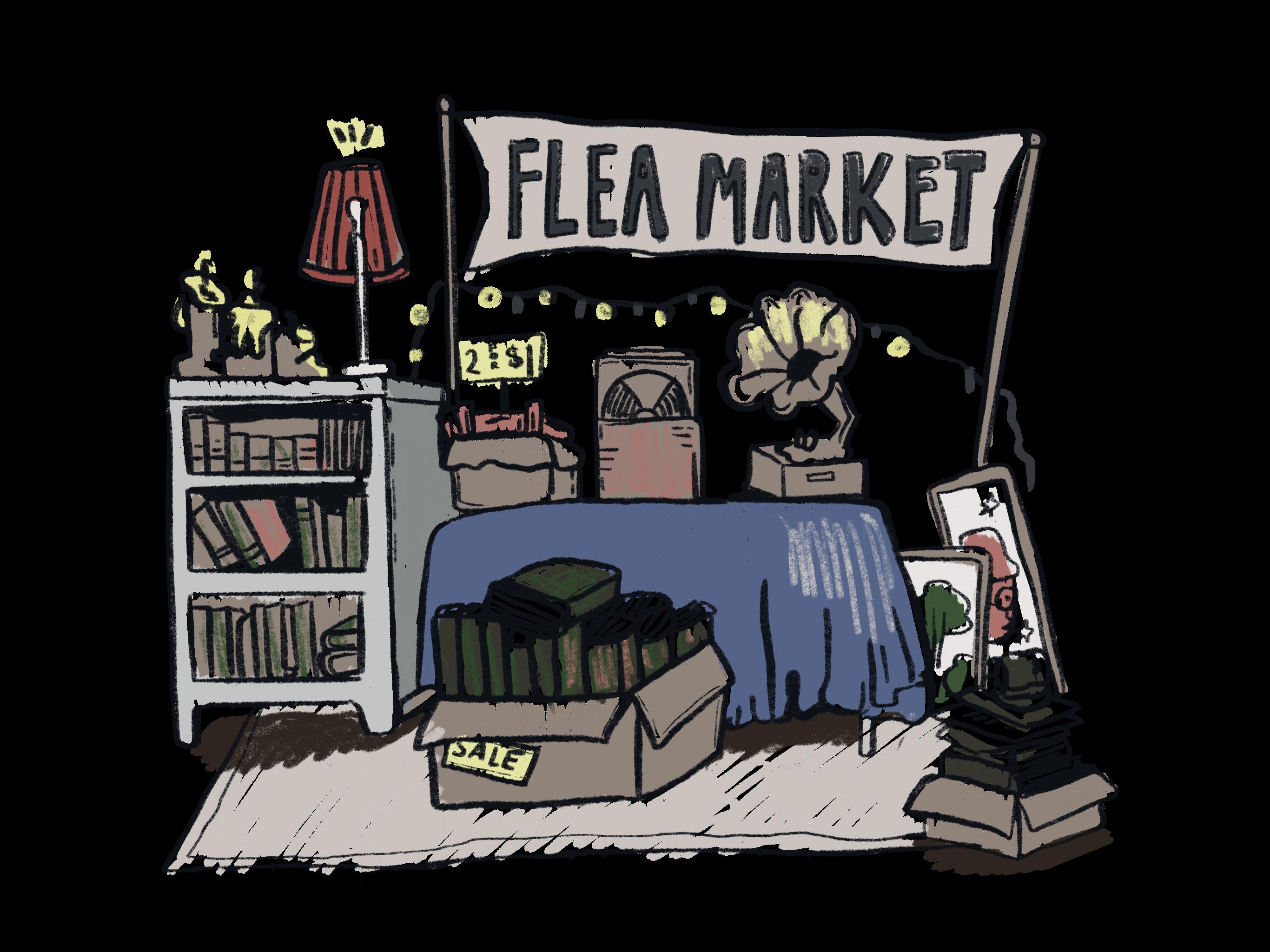
4 minute read
SCENES FROM SOWA ANALYZING THE EXPANSION OF ARTS MARKETS
Whether it’s under the summer sun or below thousands of sparkling Christmas lights, Greater Boston residents know the feeling of discovering something personal and useful to them while perusing hundreds of small businesses. Whether someone is looking at curated collections of vintage clothes, handmade jewelry, or homeware, local markets act as distinct communities that foster the exchange of ideas and goods while helping local residents avoid supporting unethical fashion and manufacturing practices. However, though vintage and arts markets act as an excellent alternative to fast fashion, the expansion of these markets cannot be separated from the fact that they o!en harm lowincome neighborhoods.
"e South of Washington province of Boston, a#ectionately known as SoWa, has recently been celebrated for its in-
Advertisement
$ux of creativity and artistic endeavors. From May to October, the SoWa Open Market is open to the Boston community with over 100 regional and local vendors. "ese unique small businesses sell items ranging from celestial-themed jewelry to statement home decor made of dri!wood. Additionally, the SoWa Winter Festival allows local businesses to seize holiday sale opportunities for three weekends at the end of November and beginning of December. Both market events are located near SoWa’s vintage market, which is open year-round.
At the same time, vintage and art markets—along with the arrival of boutiques, yoga studios, and breweries— have played a part in the gentri%cation of neighborhoods like the South End. Gentri%cation is the entry of new, wealthier tenants into improved housing units and the establishment of new businesses in poor urban areas, which eventually displaces current residents. SoWa and its formerly a#ordable housing market has changed throughout recent decades, from inhabiting low-income immigrant families in the 1950s to becoming a hotspot for the moneyed, artistic, and trendy lifestyle. "is reputation, in addition to its proximity to Downtown Boston, continues to attract Bostonians to the South End.

"e district has a large number of vendors in both seasonal and year-round markets. Chrissie Edgeworth, owner of Ramblejoy Jewelry Co, sells earrings and necklaces throughout Boston at SoWa’s Winter Market, Boston’s Women’s Market, and through the Bloom Collective—which hosts unique pop-up shops throughout Boston to showcase local businesses. Although her Etsy shop, established in 2020, opens her product to buyers across the country, Edgeworth prefers selling her jewelry locally. She explained she feels most supported as an artist in markets like SoWa, and that she appreciates the ability to share the stories of her cra! with customers who browse her stall and purchase her products. “In terms of support and community, the energy in in-person markets is a much more enriching platform,” Edgeworth said.
Freshman Arianna Shalhoub particularly enjoys buying from local artists. She said, “I am always inspired by other artists’ work, and it makes me happy when I can support them and make an impact to help them create more art in the future.” She further emphasized the supporting the o!en hidden but harmful e#ects of the fast fashion industry.

"e intention of the fast fashion industry is to keep prices low and be in tune with current trends. In turn, this makes it di&cult for consumers to be informed about the unethical labor used to create products behind the scenes. In contrast, Ramblejoy Jewelry’s website contains brief summaries of where Edgeworth obtains her patterns and fabrics. She believes in the importance of sharing “what the whole behind the scenes process looks like” for her products. Unlike major retailers, she gives recognition to the artists and the locations from which the patterns in her products originate. Not only does this enhance the story of her cra!, but it also points the spotlight onto the stories of these artists and their careers. Artist Janine Lecour creates vibrant tropical-esque textiles that are inspired by colors and wildlife and is a contributing freelance surface pattern designer for Ramblejoy. Not only is her name displayed next to her art, but also a short blurb of her background and passions, and a link to her website and social media. SoWa markets regularly receive praise, including a recent highlight from the as a “must visit” open market in Boston. Vintage markets allow consumers to reconnect with past eras of clothing and give them another chance at life instead of being thrown away.
In a written statement to the , freshman Sanaa Gordon emphasized why shopping at $ea markets is so appealing. “I love clothes and the story they tell. I think that shopping in $ea markets allows me to explore clothes of a di#erent time and wear them again,” Gordon said. “When you have a piece of clothing that you got ‘secondhand,’ you are telling a story long forgotten.”
Underneath the growing appreciation for the explosion of small businesses in SoWa is the forgotten history of the region. "e gentri%cation of SoWa began more than 40 years ago. When Pine Street Inn, Boston’s biggest homeless shelter, continued its mission to expand a#ordable housing to and beyond Harrison Avenue and onto 38-42 Upton Street, petitioners expressed a concern with having too many low-income residents. "eir “appreciation” for economic and racial diversity in their neighborhood only existed if newcomers weren’t too visible and seemed to blend in among the gentri%ers.
Currently, Ink Block, luxury Boston apartments in the South End, %nished construction in 2018 and are located where the original Boston Herald newspaper company building was. Although they include 51 a#ordable units, Ink Block apartments begin their one-bedroom apartment rental rates at $2,000 and go all the way up to $6,500 for two-bedroom apartments. What used to be considered a “skid row” (an urban, impoverished area) decades ago is now home to luxury apartments that the tenants of the district in the past would not be able to rent today.
"e changing cost of housing in the SoWa district impacts not only residents of the neighborhoods, but consumers and creators as well. As vintage markets have become more common and approachable for upper-class residents, the prices of their items have risen to match what these speci%c consumers can a#ord. Additionally, the value of real estate in lowincome areas has increased with their gentri%cation, and studios and galleries in SoWa are becoming %nancially inaccessible for artists to begin and promote their work.
SoWa’s art and vintage markets have been applauded for their ability to combine a variety of vendors that o#er a bene%cial exchange between local business and consumers. However, it’s important to recognize the circumstances for how and why SoWa markets exist today. To allow SoWa to continue evolving for its current residents and local businesses, its entire history must be recognized. Development can occur without displacement if at-risk residents have the opportunity to bene%t from it.










